Matteo Messori is one of the most interesting young Italian artists of his generation. In this dialogue he told how one of his latest exhibition projects was born, the personal exhibition “Status” at the spaces of Nero – La Factory in Pescara curated by Maria Letizia Paiato. Between painting and sculpture – through the concept of “Antiform”.
Federica Fiumelli: The “STATUS” exhibition was initially intended to mark the closure of an art residency that you should have done in March in Pescara. This was not possible due to the current health emergency due to the spread of COVID-19. The works were thus born from a paradox, rather than in situ, in your studio in Reggio Emilia. A paradox that you tell precisely in your conception of “Anti-form”. How would you tell the Antiform to someone who still doesn’t know your artistic practice?
Matteo Messori: Our initial plan was precisely to activate an on-site residence for the whole month of March. At that juncture, I would have invited curators, friends and artists from the area to view the work in progress of the exhibition. So from a project devoted to conviviality, to total and contaminating immersion in a new space, it has become, as they say, “behind closed doors”. People who know me know that I am not an introverted person at all, and that with pleasure I love being hospitable to others. This “standstill” situation, which touched everyone, reduced my person and the exhibition project “Status”. The title gives body to all the sensations experienced in a quarantine that has upset our habits, being “still” in general means much more. The contemporary mentality of our days is not capable of “standing still”, driven by the dictates of life we have to grind and fuel until our legs give us tiredness. Now completed the exhibition project “Status” I am aware of the fact that the space where the works originate is crucial. Enclosed in my study, I felt the need to expand, so I resurrected the carpentry lab of my deceased grandfather, transforming it into a new wing of my studio. During the cleaning I found materials which I instinctively used for the realization of the works at Nero – La Factory. From the waste of a place full of energies I then gave body to the works, daughters of a period such as quarantine testify to a legacy; and like a copperplate reproduce the emotions that I myself felt during the lockdown, with the hope that they are the same sensations that are perceived in the world. I am very satisfied with what has been accomplished, my only regret is that I did not enjoy a beautiful and intriguing city like Pescara. With regard to the Antiform, so at first glance, to a person who does not know my research, I would say that it is a “catalytic obsession” that from self-portrait becomes a portrait of the world. I consider myself a Spartan artist, I don’t research books and I don’t follow any rules. I move like Antiform, empathically following completely my instinct that interacts with the world, as I look with my eyes I paint with my hands.
F.F.: As the curator Maria Letizia Paiato well underlines in the critical text, your painting can also be called sculpture. In your installations you use several materials, such as wood, concrete, glass, ceramic, granite. What relationship do you have with matter? And how much does painting bring you, and lead you (consciously or unconsciously) to the material dimension?
M.M.: Matter is the lymph that gives body to everything, and in art I use it as a support to give life to my forms. The relationship I have with it is the same as the baby in swaddling clothes, who with virgin eyes observes the world. Thanks to touch and sight I rework the original functioning of the materials and turn them into canvases through my hands that instinctively act giving space to the Antiform. As Maria Letizia Paiato says, my painting has become sculpture by developing a series of pictorial installations that are consistent and prone to change. What I did was to look at painting as a “glue” that binds and unites the cracks between the forms – thus creating a set of elements that attract each other thanks to a pictorial magnetism. Essential characteristic not only for the painting but also for the painter himself, who becomes “Coil” for the user who observes the picture; or in my case a pictorial installation. I will be exaggerated but I believe that everything is basically “painting” not so much for supremacy but for “homogeneity”. Observing a sculpture, together with it we see a space that our eyes frame and define, thus creating a horizon line, a protagonist subject and the users become appearances in an agglomeration of colors and painted forms. I am by nature an unconscious person, and so am I when I paint. Compared to other painters, my dear friends and peers, I am much more “rude”. I am not patient at all and most of the time I tend to want to finish a work as soon as possible. Alas, I am insatiable and I want to see immediately what flashed in my head in a physical body. But that’s fine with me, because I like being able to give voice to my instinct without any brakes. Only in rare cases I dedicate myself for some time to a work, for example as it was for the work on canvas in hydrophilic medical gauze that I exhibited at Nero – La Factory in “Status”. In this case I was forced to wait because each square meter needed its time for drying and the tension of the substrate, then obviously once the whole thing had dried well, time two days, and I was finished.
F.F.: “STATUS”, an emblematic title in itself, indicates in its multitude of possibilities, a complex and articulated state of both artistic doing and being an artist. What does being an artist mean to you today?
M.M: Well the “Status” in itself means “to stand still” a typical imposition of a null movement which at political and hierarchical level denotes an individual’s social position. I would say fitting for what we have experienced recently, but not predominant for the exhibition we have set up. On a theoretical level, our aim was to go against a generalizing condition, which had been in place for some time and in multiple contexts, not just artistic ones. As a society we believe we are devoted to the “Motus”, which trivially means “movement”, in reality I don’t think so. That is, we all have a vision of things, and thanks to it we are able to have subjective opinions of how the world is going. From my point of view, the action that gives life to the “Motus” is dormant in itself. We are a people in constant movement who await a change. That shot, the spark that gives away everything is absent and we as human beings dedicate ourselves only to the present moment. We live for misunderstood expectations without taking into account the causes, and reluctantly we look at the problems that emerge. In my opinion, it is impossible that in front of a problem one has to “stand still”, indeed one has to do something and here the artist comes into play. In my case, I wanted to emphasize a vital aspect for our life and that is the “action” that gives motion to creation. The idea of the title “STATUS” was specifically chosen to go against this static mental doctrine. In all the works of art there is a vivid action that becomes immortal over time. My works exhibited at Nero La Factory are the children of a constraint, so in a certain sense I thank the lockdown because it forced me to create. The “limit” is not synonymous with “property” and the time we have allows our body to get used to a certain space. So we are naturally devoted to movement regardless of the space in which we find ourselves. It is our mind that plays tricks on us and unconsciously blocks us. “Volition” is the real force that initiates action, a bit like matter that allows us to be physical. Being an artist today means arming yourself with a lot of patience, because basically we know we are not super heroes, we also live with all our problems. In this historical moment it is really difficult to hold on. In my heart I know that it is not at all simple to live on art, but it is equally easy to feel good living with art. Finally, I am very confident in the strength of the artist’s resilience. Looking at man in general, I am convinced that there is no greater force than the movement that generates the “volition”.
F.F.: How do you envision the post-pandemic artistic scenario? Have you already noticed the changes? What will need to be done to preserve art in an already precarious state?
M.M.: Well obviously the scenario is not the most positive one, we cannot even say with certainty whether or not other restrictions will be given due to the pandemic. The digitization of art is getting closer. Contact with it is becoming increasingly cold and distant. World artistic identities are fluctuating, waiting for everything to settle properly. Alas, I think it takes some time before everything returns to normal, if we ever come back to it. This situation we are experiencing is clearly changing every classic dictate. The fairs, once the backbone of the art system, are now at the mercy of a “maybe”, thus creating a chain effect such as to reach the daily life of the private who once lived making art. These are really delicate situations that cannot be missed. The changes in art are always there, day by day something changes. But never as in this case we have witnessed such a drastic shock. This situation has remastered world systems in just three months. But I have to admit with pleasure that I also felt positive changes. Faced with problems of this level, artists have begun to play strength for a wider collective good. Being an artist devoted to conviviality, I cannot fail to spur the rectification of a support system for those realities or individuals who need support. Not only economically but also morally. On my skin I found the comfort and help that was given to me by friends, artists and acquaintances very dear to me. What needs to be preserved is our mood, because in the end it is our emotional state that generates what we do. Beyond successes and compromises is the “serenity” that we want most in the world, and to get it and make it our own we need ourselves. This is an aspect that I learned by getting to know the people around me better. Working with art, I got to know people I never imagined I would meet. Over time artists and curators have become acquaintances, friends and later brothers. The energy that can spring from a beautiful table set accompanied by thinking and active minds towards a single collective goal is incomparable. It is only by helping each other that art will return to its vigor. It is the process that gives life to art, not its result.
F.F.: If you close the eyes what Antiform do you see?
M.M.: It’s a good question … I know I seem crazy if I talk about her as a person, but if I close my eyes I see a friend who never leaves me alone. I see someone who knows how I am. I see silence in my ears and nothing in my eyes. I see an impassive fear of abandonment. I see a slight tremor in the spaces that surround me. I see a healthy obsession with repetition. I see an engulfing need for confirmation. I see existence in my hands. I have seen a border that has long been crossed. I see the empathy around me. I see the memory of a past day. I see the suffering of abstinence. I see the joy of abundance. I see a deep blue that comforts me. I see the sound of seconds tormenting me. I see the lifeblood of thoughtfulness. I see the goodness of a sign. I see a problem without cure. I see it as a set of discontent and satisfaction that accompany my life hand in hand.
Info:
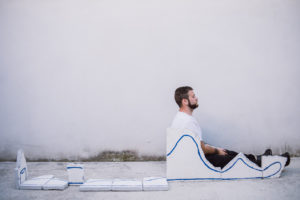 Matteo Messori, Portrait, Status, Nero La Factory, Pescara, 2020. Ph. Alice Vacondio
Matteo Messori, Portrait, Status, Nero La Factory, Pescara, 2020. Ph. Alice Vacondio
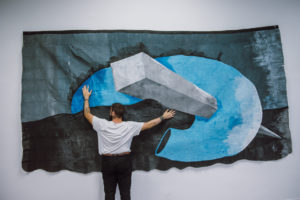 Matteo Messori, Portrait, Status, Nero La Factory, Pescara, 2020. Ph. Alice Vacondio
Matteo Messori, Portrait, Status, Nero La Factory, Pescara, 2020. Ph. Alice Vacondio
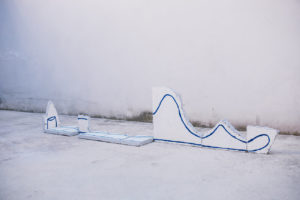 Matteo Messori, Formastante (Status #3), acrylic, stucco, plaster on granite, 200 cm x 70 cm x 35 cm, 2020. Ph. Alice Vacondio
Matteo Messori, Formastante (Status #3), acrylic, stucco, plaster on granite, 200 cm x 70 cm x 35 cm, 2020. Ph. Alice Vacondio
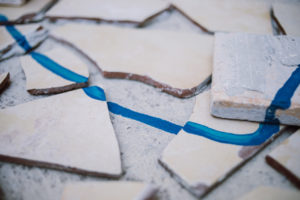 Matteo Messori, Formastante (Status #2), detail, acrylic on tiles, cement and polyurethane, 120 cm x 60 cm 2020. Ph. Alice Vacondio
Matteo Messori, Formastante (Status #2), detail, acrylic on tiles, cement and polyurethane, 120 cm x 60 cm 2020. Ph. Alice Vacondio
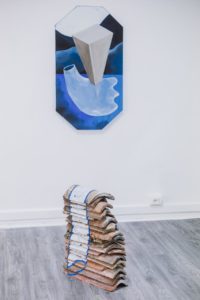 Matteo Messori, Status, installation view at Nero La Factory, Pescara, 2020. Ph. Alice Vacondio
Matteo Messori, Status, installation view at Nero La Factory, Pescara, 2020. Ph. Alice Vacondio
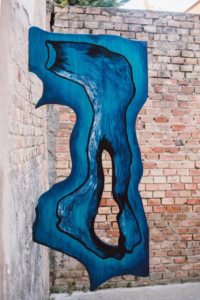 Matteo Messori, Antiforma (Status), acrylic, paint and lacquer on wood, 150 cm x 60 cm x 20 cm, 2020. Ph. Alice Vacondio
Matteo Messori, Antiforma (Status), acrylic, paint and lacquer on wood, 150 cm x 60 cm x 20 cm, 2020. Ph. Alice Vacondio
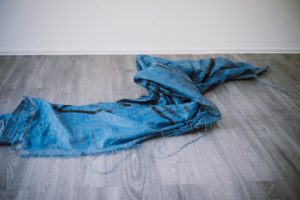 Matteo Messori, Antiforma (Status #12), paint on rain cloth, 180 cm x 270 cm, 2020, detail. Ph. Alice Vacondio
Matteo Messori, Antiforma (Status #12), paint on rain cloth, 180 cm x 270 cm, 2020, detail. Ph. Alice Vacondio
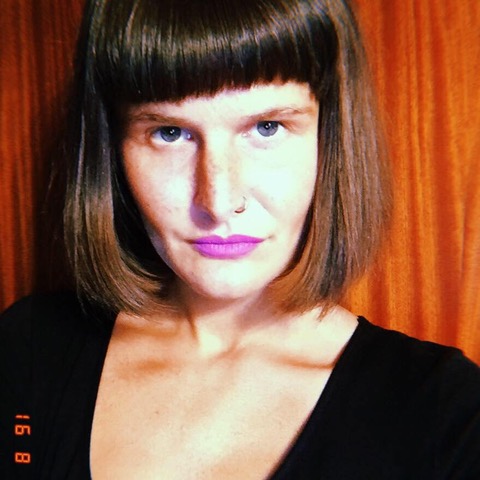
(1990) Graduated at DAMS in Bologna in Visual Arts with a thesis on the relationship and the paradoxes that exist between photography and fashion, from Cecil Beaton to Cindy Sherman, she specializes at the Academy of Fine Arts in Bologna in the two-year course in art teaching, communication and cultural mediation of the artistic heritage with a thesis on the historical-critical path of Francesca Alinovi, a postmodern critique. Since 2012 she has started to collaborate with exhibition spaces carrying out various activities: from setting up exhibitions to writing critical texts or press releases, to educational workshops for children, and social media manager. She has been collaborating since 2011 with various magazines: Vogue online, The Artship, Broken Fracture, Wall Street International Magazine, Forme Uniche Magazine.



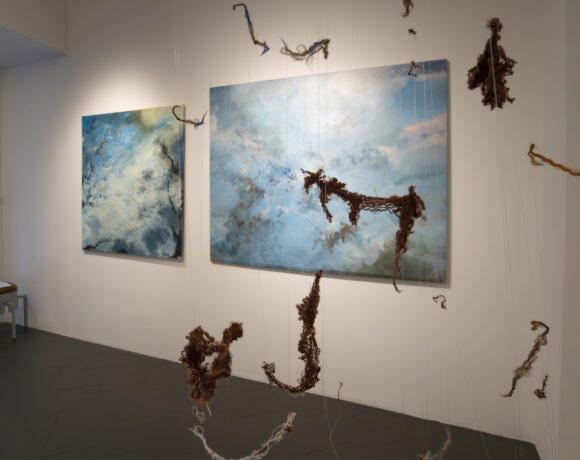
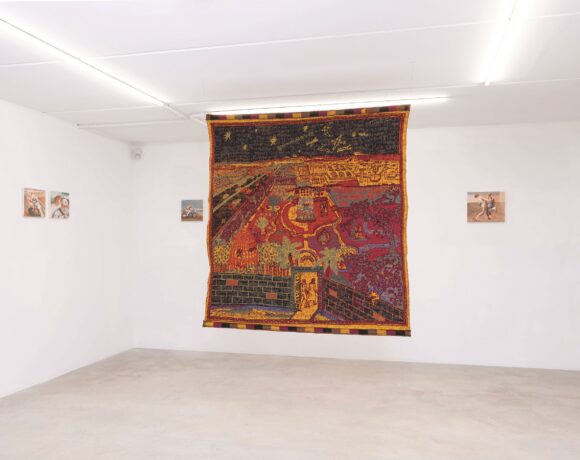

NO COMMENT